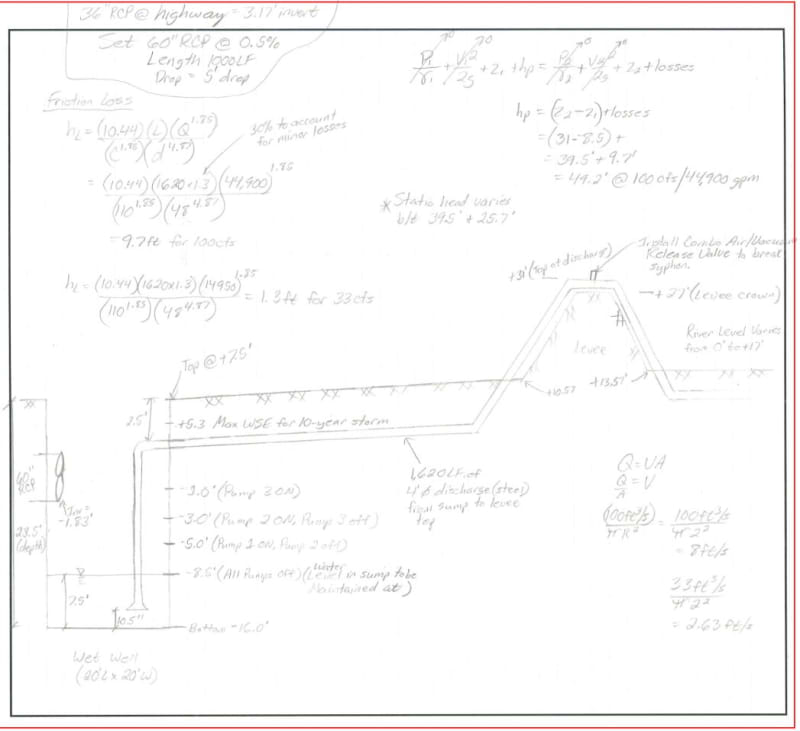I'm currently working on a pump station design and had a question about the static head and total head of the system. I will be pumping out of a wet well, over a high point in the discharge line as it crosses over a levee, and into a river. The max water surface elevation in my wet well is +5' for my design storm, the levee crown is at +31', and the river stage is a +12.5'. I will have 3 pumps set in parallel with a single discharge line and their floats will be set at different on/off elevations. My wet well will always hold water due to submergence requirements on the submersible pumps down to a -8.5' elevation. An air release/vacuum valve will be installed at the high point in the discharge line and the discharge line will be submerged.
Is my static head the difference in the water surface elevations in my wet well when all pumps are off and the river (12.5'--8.5' = 21')? Or is the static head the difference in the wet well to the high point (31'--8.5' = 39.5')?
Also, to calculate the friction losses in the system should I use the flow rate when all 3 pumps are running or only 1 pump running?
Is my static head the difference in the water surface elevations in my wet well when all pumps are off and the river (12.5'--8.5' = 21')? Or is the static head the difference in the wet well to the high point (31'--8.5' = 39.5')?
Also, to calculate the friction losses in the system should I use the flow rate when all 3 pumps are running or only 1 pump running?

